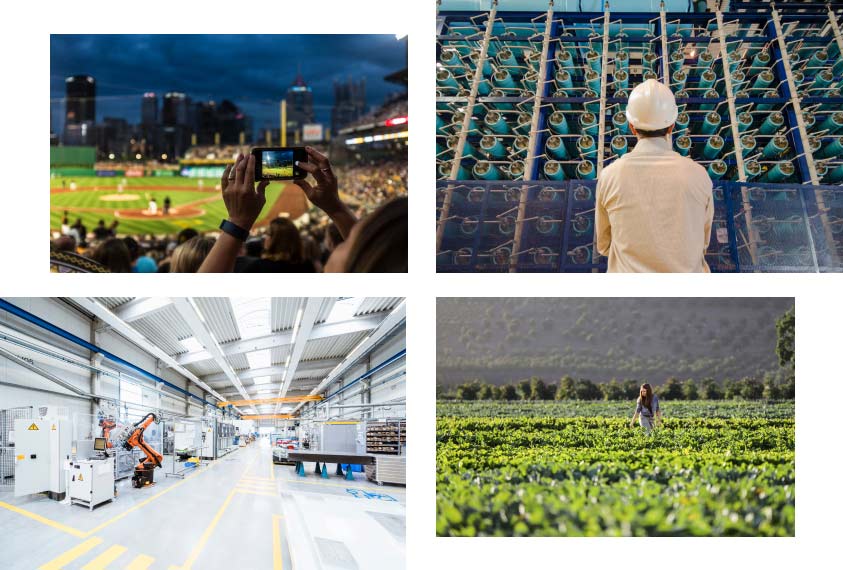Microsoft has announced a number of features to its Azure platform at its annual developers conference, ‘Ignite’, at Florida, USA,
Azure Digital Twins: This brand-new Azure service enables Enterprises to create a comprehensive digital model of any physical environment. This includes a model of people, places, and things as well as the relationships and processes that bind them. These models will not only be static ones but the Azure Digital Twins will connect the digital model directly with the devices and sensors in the physical world to keep the digital model always up-to-date.
By doing this here’s what will be achieved:
- The ability for digital model changes to trigger business logic and workflows to the physical environment, through an event driven, workflow approach. For a simple example, when everyone has vacated a conference room you can instantly turn off the lights and lower the air conditioning.
- Azure Digital Twins integrates seamlessly with Azure data and analytics services so you can track all past activities, run simulations, and predict the future of your digital model and physical environment.
Azure IoT Edge extended offline: To address the ever-expanding use cases at the edge, Microsoft was adding the capability for IoT devices to operate disconnected from the internet for extended periods with the public preview of Azure IoT Edge extended offline capability.
Azure IoT Central: Azure IoT Central is now general available. Azure IoT Central is a fully managed global IoT SaaS (software-as-a-service) solution that can connect, monitor, and manage IoT assets at scale, enabling the launch of connected products faster in the market.
Azure Data Box Edge: This is now available in preview. Azure Data Box Edge enables users to pre-process data at the edge and also move data to Azure efficiently. Azure Data Box Edge uses advanced FPGA hardware natively integrated into the appliance to run machine learning inference algorithms at the edge efficiently. The size and portability allow you to run Azure Data Box Edge as close to users, apps and data as needed.
Microsoft said in a post on its official blog that the intelligent Cloud and intelligent Edge tech solutions made it possible to provide “consistent” power to critical institutions like hospitals and schools, manage precious resources like energy, food and water, as well as to create devices that help people who have disabilities or diseases live more comfortably and connect with relatives and friends, and much more.
It said today, the world was going through a technology transformation, including smart sensors and connected devices are breathing new life into industrial equipment from factories to farms, smart cities to homes.
Simultaneously, hybrid Cloud was evolving from being the integration of a data center with the public Cloud, to becoming units of computing available at even the world’s most remote destinations working in connection with public Cloud.
Enabling intelligent Cloud and intelligent Edge solutions requires a new class of distributed, connected applications and will ultimately deliver break-through business outcomes. These Cloud/Edge applications are built as a single solution yet run in a distributed fashion – optimised to take advantage of both robust cloud capabilities and edge locality. At the edge, the application is contextually aware and can run in both connected and disconnected states.
Explaining how Microsoft was building the Azure Cloud/Edge capabilities, Julia White, Corporate Vice President, Microsoft said they had built Azure to provide consistency in programming models, data services, AI, and DevOps to simplify Cloud/Edge app development and ensure the efficiency of the on-going app management. The Azure Security Center provided unified security management and advanced threat protection for systems running in Cloud and on the Edge.
Single identity management was another benefit. Providing single identity controls across the Cloud/Edge application was necessary to secure and manage applications wherever they reside. Azure Active Directory provides unified identity management and conditional access across the cloud and edge, providing protection from unauthorized access to apps and data wherever it resides.
Tapping into the contextual insight from the Edge provided Machine Learning models more robust data and thus better results. Azure enables users to combine data in the Cloud and from the edge to develop ML models. Then, the same ML models developed and tested in Azure can be distributed to run across a massive set of certified devices running with Azure IoT Edge.
Image Credit: Microsoft blog

